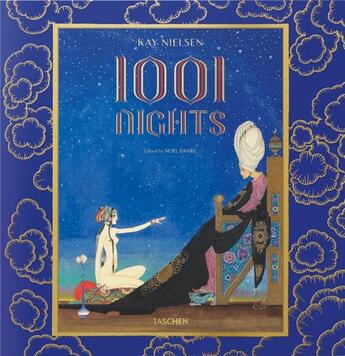-
Date de parution : 16/06/2023
-
Editeur :
Taschen
-
EAN : 9783836595636
-
Série :
(-)
-
Support :
Papier
Résumé:
In the late 1910s, in a Europe ravaged by World War I, Danish illustrator Kay Nielsen put the finishing touches on his illustrations of A Thousand and One Nights. The results are considered masterpieces of early 20th-century illustration: bursting with sumptuous colors of deep blues, reds, and... Voir plus
In the late 1910s, in a Europe ravaged by World War I, Danish illustrator Kay Nielsen put the finishing touches on his illustrations of A Thousand and One Nights. The results are considered masterpieces of early 20th-century illustration: bursting with sumptuous colors of deep blues, reds, and gold leaf, and evoking all the magic of this legendary collection of Indo-Persian and Arabic folktales, compiled between the 8th and 13th centuries.However, publishers retreated from Nielsen's project in the financially strapped postwar climate, and the publication never happened. A rising star, Nielsen moved on to other work. This world heritage classic's spectacular pen, ink, and watercolor images remained under lock and key for 40 years. Published just once in the 1970s, the illustrations were rescued from oblivion after Nielsen's death in 1957 and are now held by the UCLA Grunwald Center for the Graphic Arts at the Hammer Museum in Los Angeles, the Art Institute of Chicago, and in two private collections.This publication is a unique compilation of fine art prints and stunning illustrations reproduced directly from Nielsen's original watercolors-the only complete set of his extraordinary drawings to have survived. The book features descriptions of all of the images and three generously illustrated essays on the making of this series, the origin of Nielsen's unique imagery, and a history of the tales. In addition, it shows many unpublished or rarely seen artworks by Nielsen and intricate black-and-white drawings Nielsen created for the original publication.
Donner votre avis









